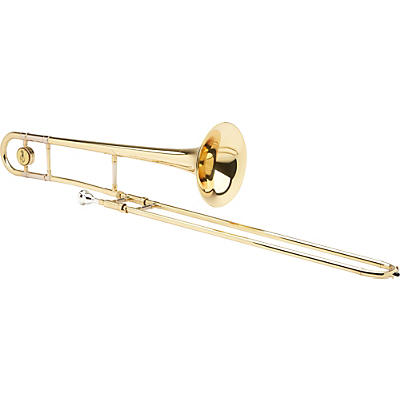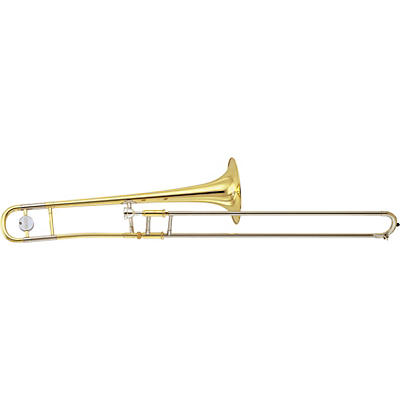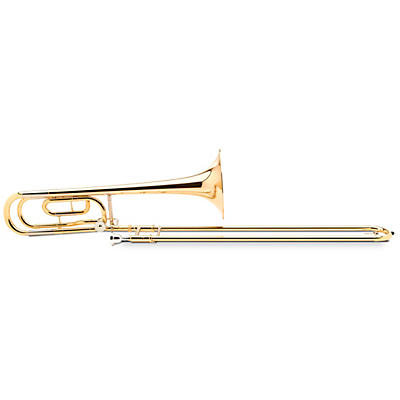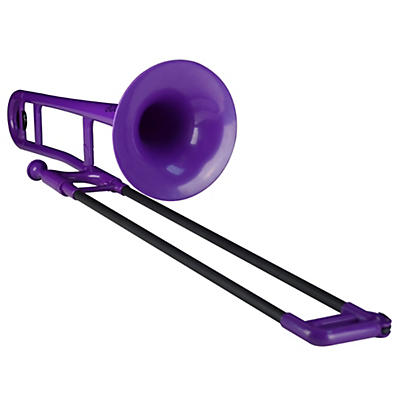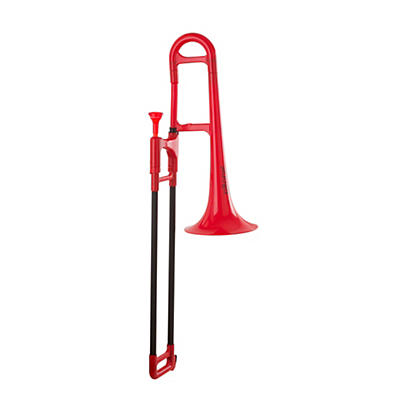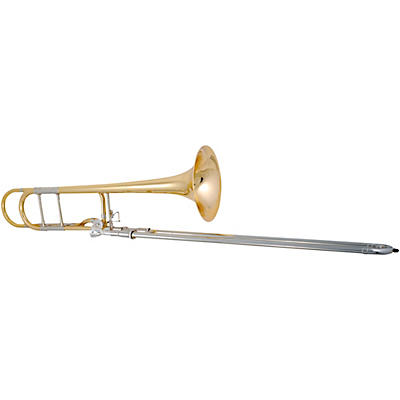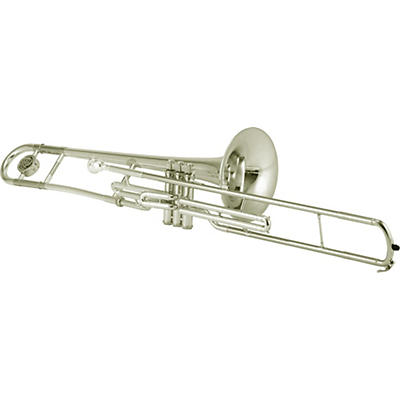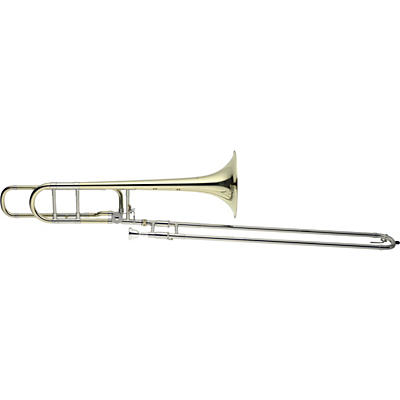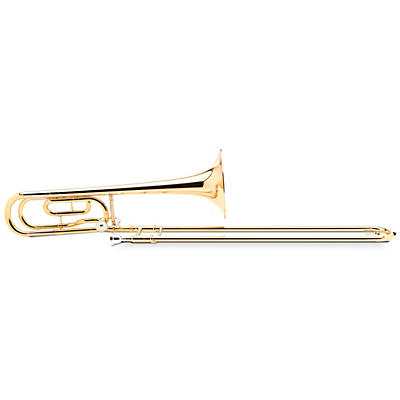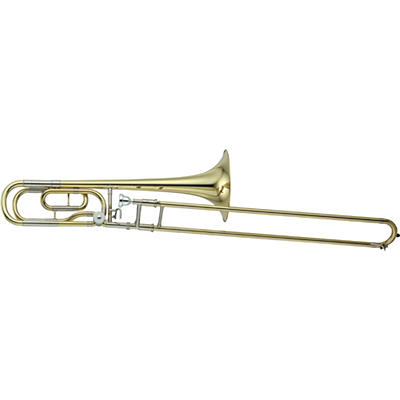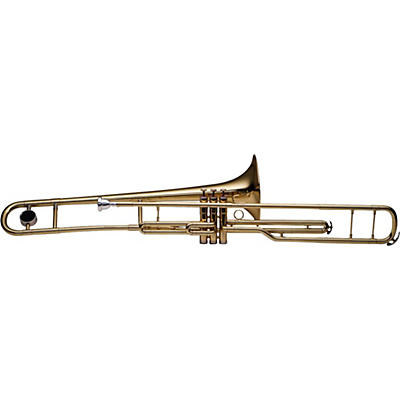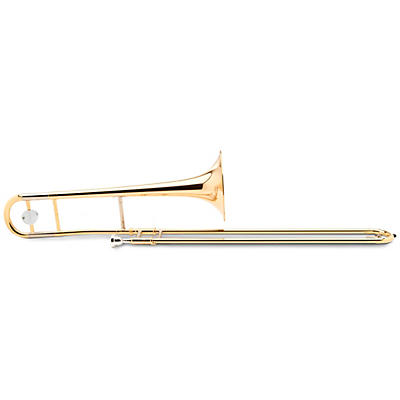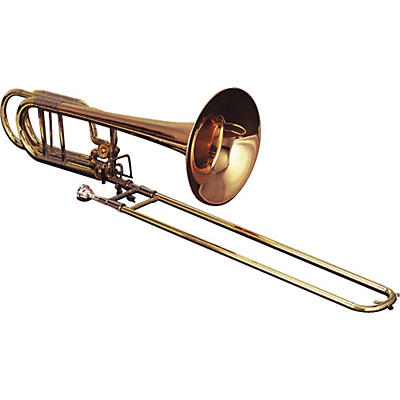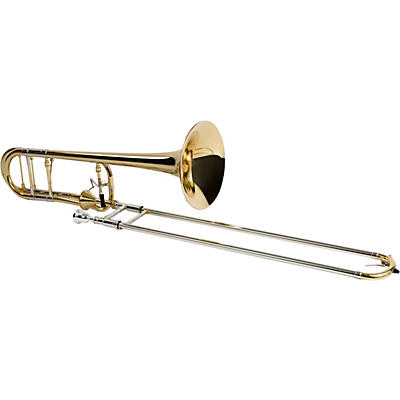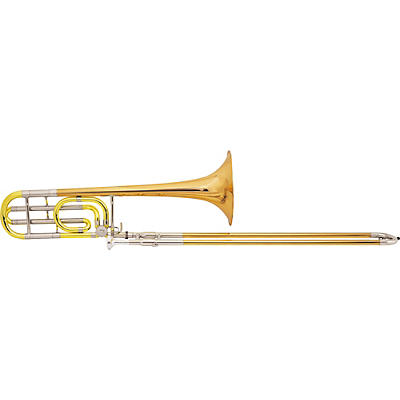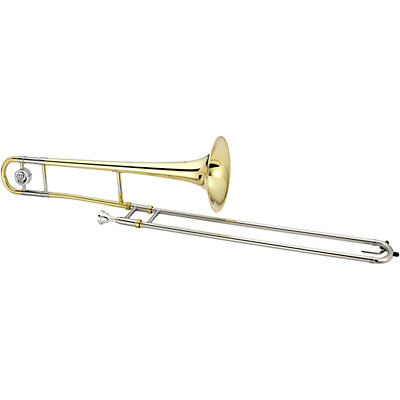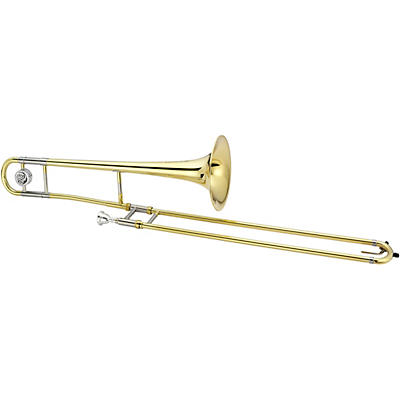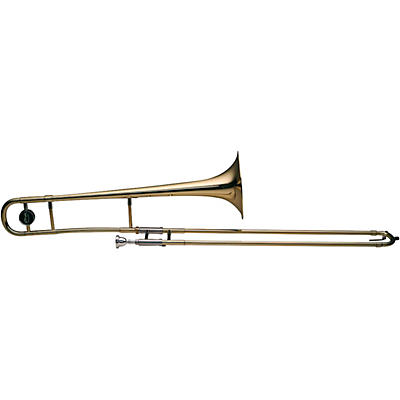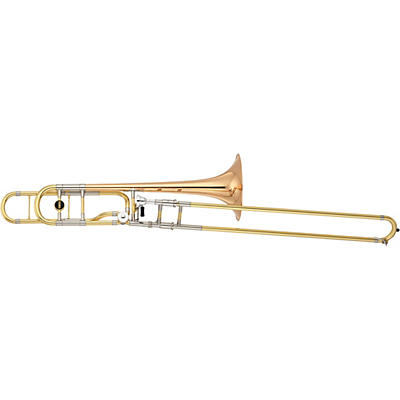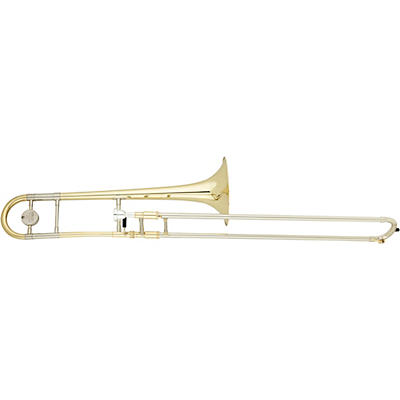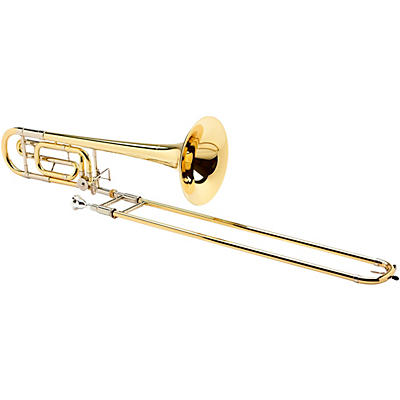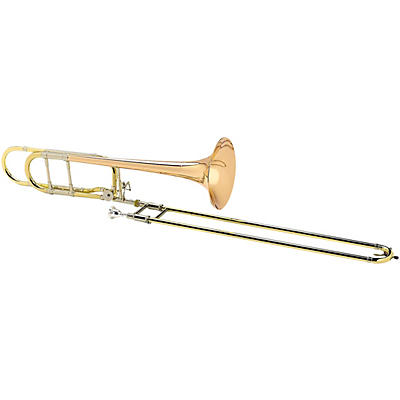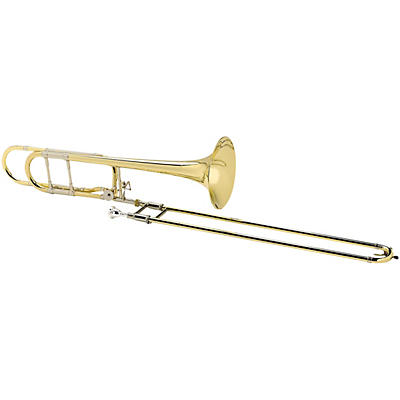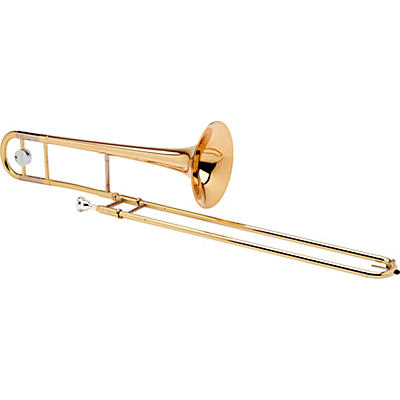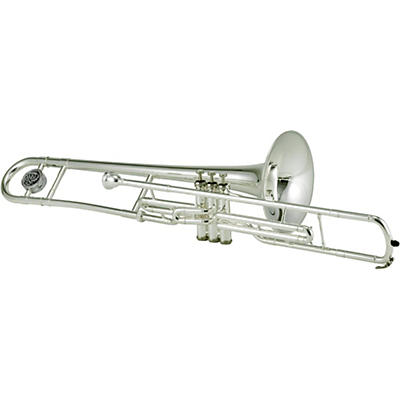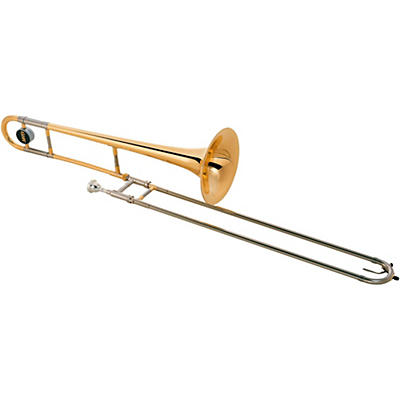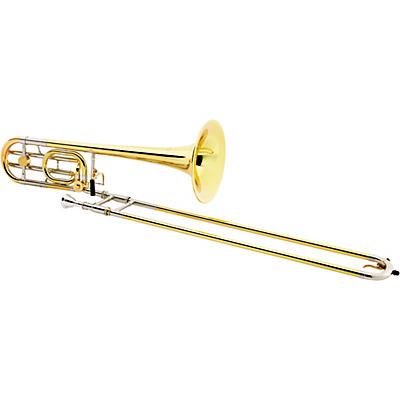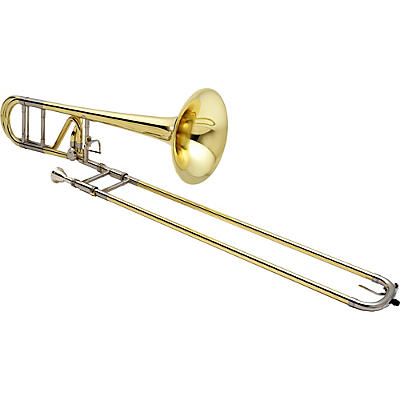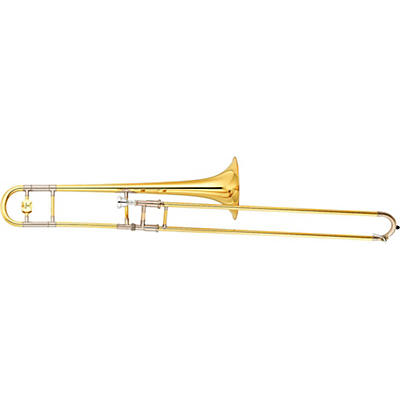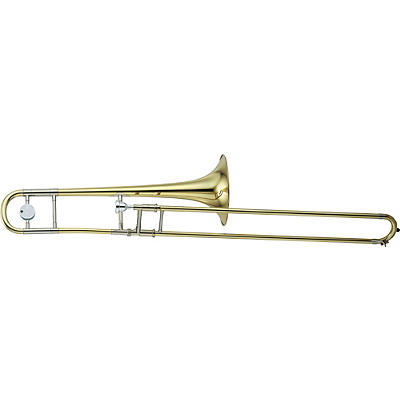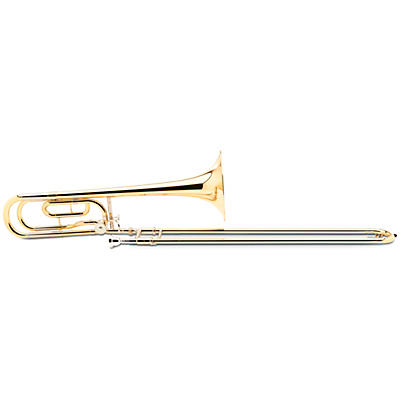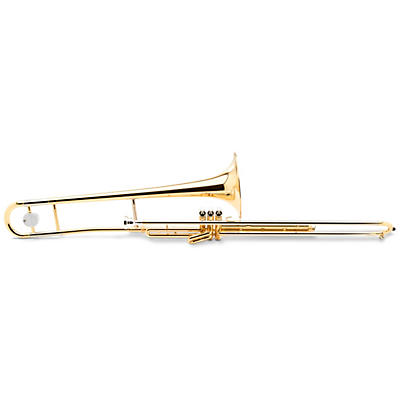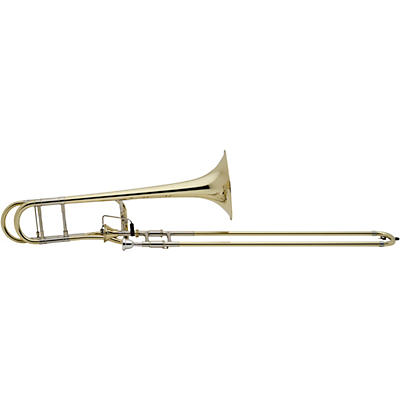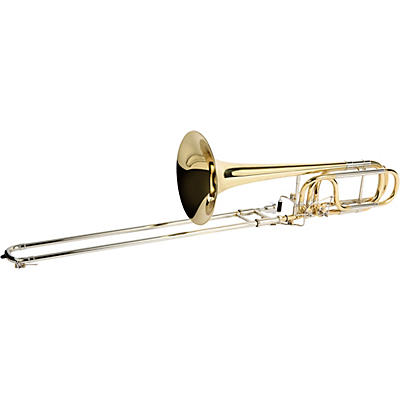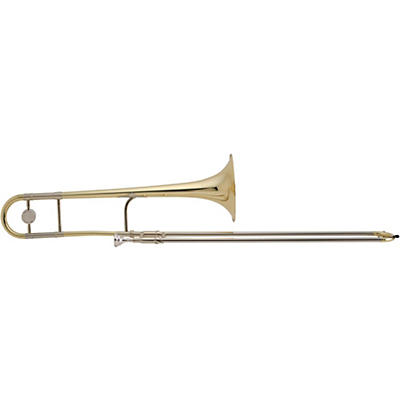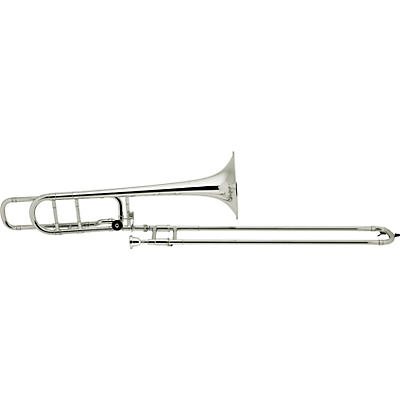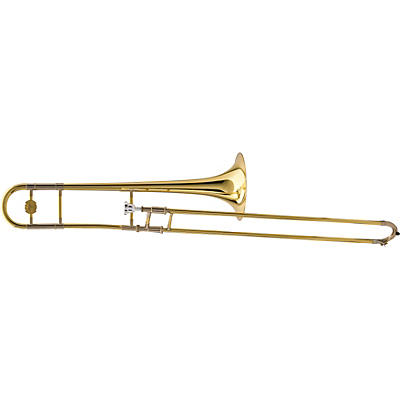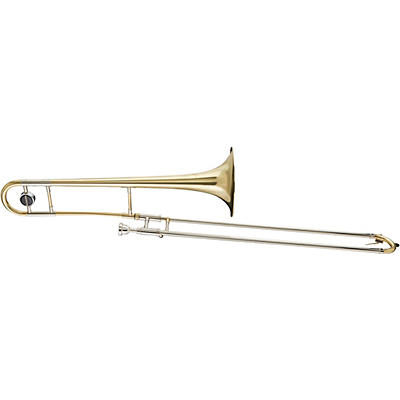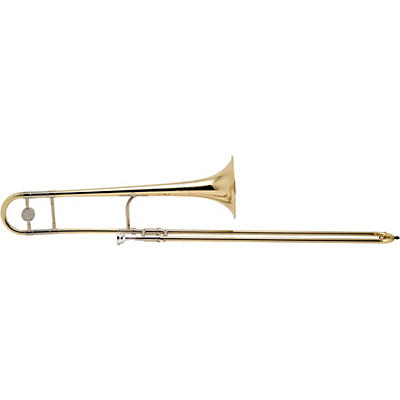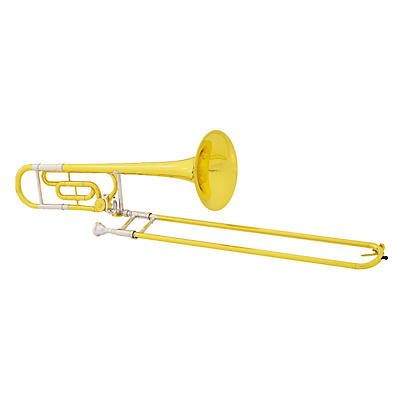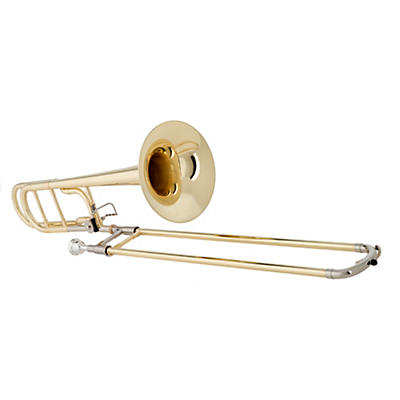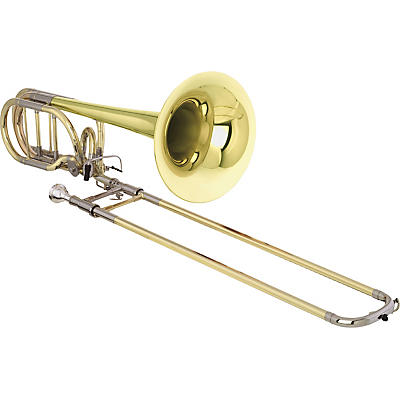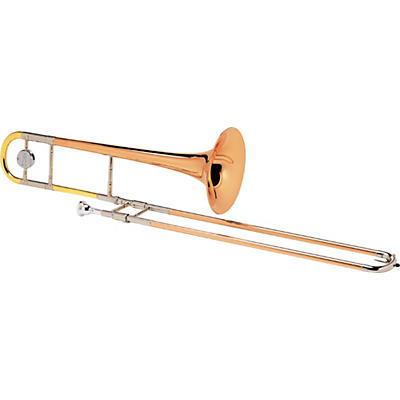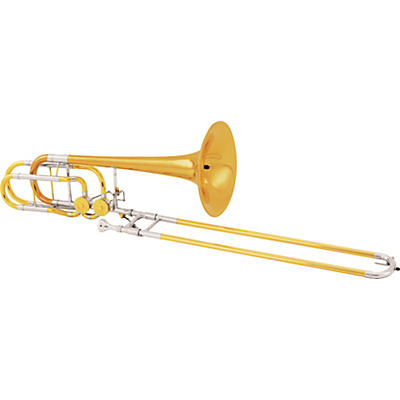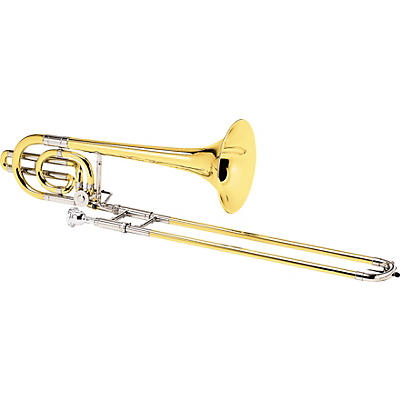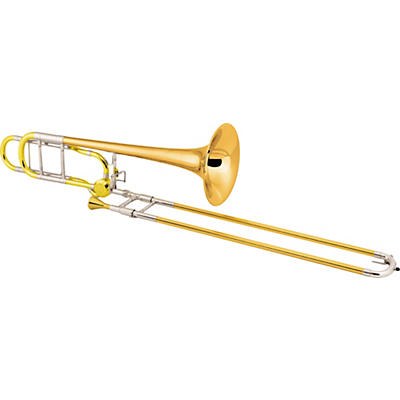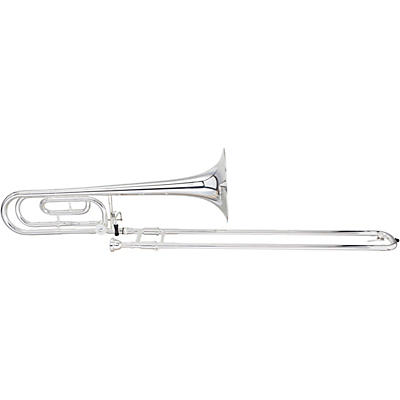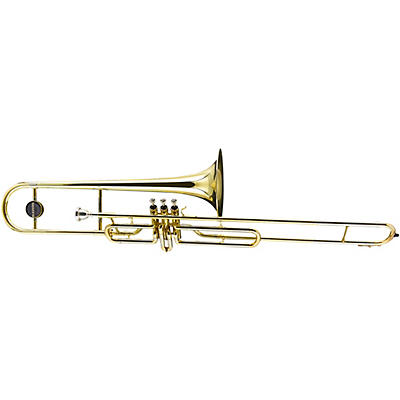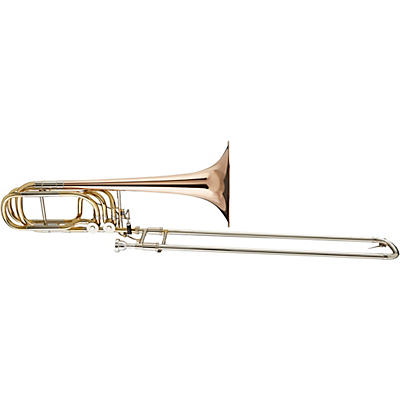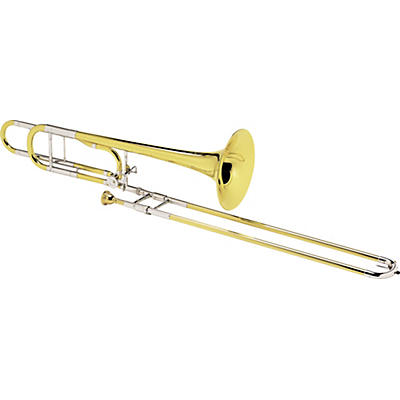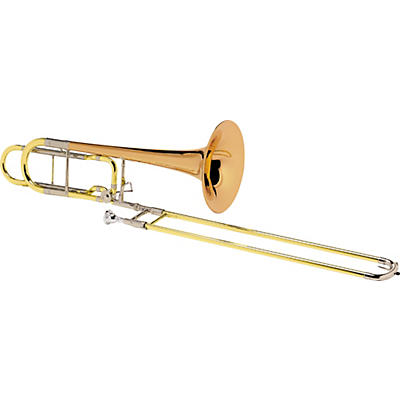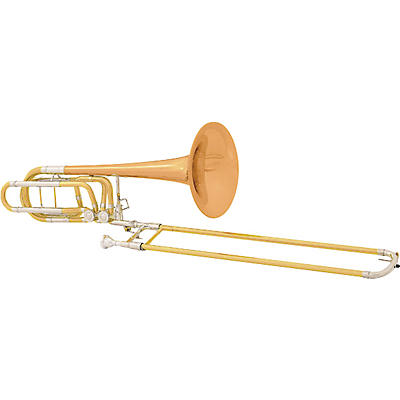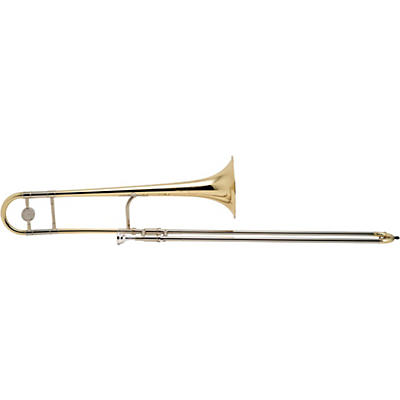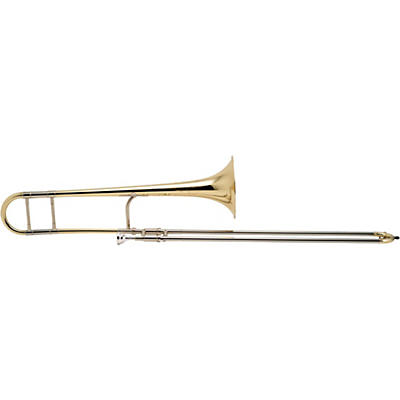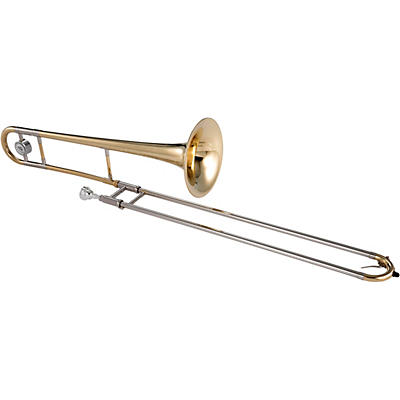Filters
Trombones
(99 Items)
15% Off $199+ W/ Festive
SkuInfo [skuId=site1skuH74693000001000, productId=site1prodH74693, linkUrl=/brass-instruments/etude-etb-100-series-student-trombone, imageId=ETB-100-Series-Student-Trombone-Lacquer/H74693000001000, displayName=Etude ETB-100 Series Student Trombone, description=null, brandName=Etude, totalReviews=20, overallRating=8, priceVisibility=1, graphicalSticker=15% Off $199+ W/ Festive, allUsed=false, onsale=false, lowPrice=499.99, highPrice=499.99, startingRestockPrice=null, restockItemCount=0, startingUsedPrice=null, usedItemCount=0, restockLinkURL=null, maxSaving=null, maxSavingPercent=null, maxSavingMSRP=null, externalInfo={}, productSeoUrl=/brass-instruments/etude-etb-100-series-student-trombone, productVisibilityMSRP =1, storeName=null, storeId=null]
Etude ETB-100 Series Student Trombone
Product Price
$499.99
48-Month Financing*
SkuInfo [skuId=site1sku464515000232901, productId=site1prod464515, linkUrl=/brass-instruments/yamaha-ysl-354-series-student-trombone, imageId=YSL-354-Series-Student-Trombone-YSL-354S-Silver/464515000232901, displayName=Yamaha YSL-354 Series Student Trombone, description=null, brandName=Yamaha, totalReviews=3, overallRating=9, priceVisibility=1, graphicalSticker=48-Month Financing*, allUsed=false, onsale=false, lowPrice=1874.0, highPrice=2174.0, startingRestockPrice=null, restockItemCount=0, startingUsedPrice=1739.2, usedItemCount=1, restockLinkURL=null, maxSaving=100.0, maxSavingPercent=4, maxSavingMSRP=2274.0, externalInfo={}, productSeoUrl=/brass-instruments/yamaha-ysl-354-series-student-trombone, productVisibilityMSRP =3, storeName=null, storeId=null]
Yamaha YSL-354 Series Student Trombone
from
Product Price
$1,874.00
$1,739.20
15% Off $199+ W/ Festive
SkuInfo [skuId=site1skuJ56038000001001, productId=site1prodJ56038, linkUrl=/brass-instruments/allora-atb-450-vienna-series-intermediate-trombone, imageId=ATB-450-Vienna-Series-Intermediate-F-Attachment-Trombone-Lacquer-Yellow-Brass-Bell/J56038000001001, displayName=Allora ATB-450 Vienna Series Intermediate F-Attachment Trombone, description=null, brandName=Allora, totalReviews=1, overallRating=10, priceVisibility=1, graphicalSticker=15% Off $199+ W/ Festive, allUsed=false, onsale=false, lowPrice=1199.99, highPrice=1199.99, startingRestockPrice=null, restockItemCount=0, startingUsedPrice=null, usedItemCount=0, restockLinkURL=null, maxSaving=null, maxSavingPercent=null, maxSavingMSRP=null, externalInfo={}, productSeoUrl=/brass-instruments/allora-atb-450-vienna-series-intermediate-trombone, productVisibilityMSRP =3, storeName=null, storeId=null]
Allora ATB-450 Vienna Series Intermediate F-Attachment...
Product Price
$1,199.99
48-Month Financing*
SkuInfo [skuId=site1sku461517000000000, productId=site1prod461517, linkUrl=/brass-instruments/yamaha-ysl-446g-intermediate-trombone, imageId=YSL-446G-Intermediate-Trombone/461517000000000, displayName=Yamaha YSL-446G Intermediate Trombone, description=Intermediate Trombone, key of Bb, .525 bore, 8-1/2 gold brass two-piece bell, brandName=Yamaha, totalReviews=5, overallRating=9, priceVisibility=1, graphicalSticker=48-Month Financing*, allUsed=false, onsale=false, lowPrice=2771.99, highPrice=2771.99, startingRestockPrice=null, restockItemCount=0, startingUsedPrice=null, usedItemCount=0, restockLinkURL=null, maxSaving=822.01, maxSavingPercent=23, maxSavingMSRP=3594.0, externalInfo={}, productSeoUrl=/brass-instruments/yamaha-ysl-446g-intermediate-trombone, productVisibilityMSRP =1, storeName=null, storeId=null]
Yamaha YSL-446G Intermediate Trombone
Product Price
$2,771.99
SkuInfo [skuId=site1skuH77722000005000, productId=site1prodH77722, linkUrl=/brass-instruments/jiggs-pbone-plastic-trombone/h77722, imageId=Plastic-Trombone-Purple/H77722000005000, displayName=pBone Plastic Trombone, description=null, brandName=pBone, totalReviews=35, overallRating=9, priceVisibility=1, graphicalSticker=null, allUsed=false, onsale=false, lowPrice=219.0, highPrice=219.0, startingRestockPrice=null, restockItemCount=0, startingUsedPrice=null, usedItemCount=0, restockLinkURL=null, maxSaving=86.0, maxSavingPercent=28, maxSavingMSRP=305.0, externalInfo={}, productSeoUrl=/brass-instruments/jiggs-pbone-plastic-trombone/h77722, productVisibilityMSRP =1, storeName=null, storeId=null]
pBone Plastic Trombone
Product Price
$219.00
SkuInfo [skuId=site1skuH94860000002000, productId=site1prodH94860, linkUrl=/brass-instruments/jiggs-mini-pbone-plastic-trombone, imageId=Mini-Plastic-Trombone-Red/H94860000002000, displayName=pBone Mini Plastic Trombone, description=null, brandName=pBone, totalReviews=5, overallRating=8, priceVisibility=1, graphicalSticker=null, allUsed=false, onsale=false, lowPrice=145.0, highPrice=145.0, startingRestockPrice=null, restockItemCount=0, startingUsedPrice=null, usedItemCount=0, restockLinkURL=null, maxSaving=54.0, maxSavingPercent=27, maxSavingMSRP=199.0, externalInfo={}, productSeoUrl=/brass-instruments/jiggs-mini-pbone-plastic-trombone, productVisibilityMSRP =1, storeName=null, storeId=null]
pBone Mini Plastic Trombone
Product Price
$145.00
48-Month Financing*
SkuInfo [skuId=site1skuJ22694000002001, productId=site1prodJ22694, linkUrl=/brass-instruments/antoine-courtois-paris-ac280bo-performance-series-f-attachment-trombone, imageId=AC280BO-Performance-Series-F-Attachment-Trombone-Lacquer-Yellow-Brass-Bell/J22694000002001, displayName=Antoine Courtois Paris AC280BO Performance Series F-Attachment Trombone, description=null, brandName=Antoine Courtois Paris, totalReviews=0, overallRating=null, priceVisibility=1, graphicalSticker=48-Month Financing*, allUsed=false, onsale=false, lowPrice=2696.0, highPrice=2696.0, startingRestockPrice=null, restockItemCount=0, startingUsedPrice=2022.0, usedItemCount=1, restockLinkURL=null, maxSaving=674.0, maxSavingPercent=20, maxSavingMSRP=3370.0, externalInfo={}, productSeoUrl=/brass-instruments/antoine-courtois-paris-ac280bo-performance-series-f-attachment-trombone, productVisibilityMSRP =1, storeName=null, storeId=null]
Antoine Courtois Paris AC280BO Performance Series...
Product Price
$2,696.00
$2,022.00
48-Month Financing*
SkuInfo [skuId=site1skuJ49419000001001, productId=site1prodJ49419, linkUrl=/brass-instruments/jupiter-jtb700v-series-bb-valve-trombone, imageId=JTB700V-Standard-Series-Bb-Valve-Trombone-Silver-plated-Yellow-Brass-Bell/J49419000001001, displayName=Jupiter JTB700V Standard Series Bb Valve Trombone, description=null, brandName=Jupiter, totalReviews=1, overallRating=10, priceVisibility=1, graphicalSticker=48-Month Financing*, allUsed=false, onsale=false, lowPrice=1819.0, highPrice=1999.0, startingRestockPrice=null, restockItemCount=0, startingUsedPrice=null, usedItemCount=0, restockLinkURL=null, maxSaving=890.0, maxSavingPercent=31, maxSavingMSRP=2889.0, externalInfo={}, productSeoUrl=/brass-instruments/jupiter-jtb700v-series-bb-valve-trombone, productVisibilityMSRP =1, storeName=null, storeId=null]
Jupiter JTB700V Standard Series Bb Valve Trombone
from
Product Price
$1,819.00
48-Month Financing*
SkuInfo [skuId=site1skuJ37268000001001, productId=site1prodJ37268, linkUrl=/brass-instruments/jupiter-jtb1150fo-performance-series-f-attachment-trombone, imageId=JTB1150FO-Performance-Series-F-Attachment-Trombone-Lacquer-Yellow-Brass-Bell/J37268000001001, displayName=Jupiter JTB1150FO Performance Series F-Attachment Trombone, description=null, brandName=Jupiter, totalReviews=null, overallRating=null, priceVisibility=1, graphicalSticker=48-Month Financing*, allUsed=false, onsale=false, lowPrice=2244.0, highPrice=2674.0, startingRestockPrice=null, restockItemCount=0, startingUsedPrice=null, usedItemCount=0, restockLinkURL=null, maxSaving=645.0, maxSavingPercent=22, maxSavingMSRP=2889.0, externalInfo={}, productSeoUrl=/brass-instruments/jupiter-jtb1150fo-performance-series-f-attachment-trombone, productVisibilityMSRP =1, storeName=null, storeId=null]
Jupiter JTB1150FO Performance Series F-Attachment Trombone
from
Product Price
$2,244.00
48-Month Financing*
SkuInfo [skuId=site1skuK48161000001000, productId=site1prodK48161, linkUrl=/brass-instruments/levante-lv-tb5415-professional-bb-f-large-bore-trombone, imageId=LV-TB5415-Professional-Bb-F-Large-Bore-Trombone-Clear-Lacquer/K48161000001000, displayName=Levante LV-TB5415 Professional Bb/F Large Bore Trombone, description=null, brandName=Levante, totalReviews=0, overallRating=null, priceVisibility=1, graphicalSticker=48-Month Financing*, allUsed=false, onsale=false, lowPrice=749.99, highPrice=749.99, startingRestockPrice=null, restockItemCount=0, startingUsedPrice=null, usedItemCount=0, restockLinkURL=null, maxSaving=279.01, maxSavingPercent=27, maxSavingMSRP=1029.0, externalInfo={}, productSeoUrl=/brass-instruments/levante-lv-tb5415-professional-bb-f-large-bore-trombone, productVisibilityMSRP =1, storeName=null, storeId=null]
Levante LV-TB5415 Professional Bb/F Large Bore Trombone
Product Price
$749.99
48-Month Financing*
SkuInfo [skuId=site1sku461518000000000, productId=site1prod461518, linkUrl=/brass-instruments/yamaha-ysl-448g-intermediate-trombone, imageId=YSL-448G-Intermediate-Trombone/461518000000000, displayName=Yamaha YSL-448G Intermediate Trombone, description=Intermediate Trombone, key of Bb, .525 bore, 8-1/2 gold brass two-piece bell, brandName=Yamaha, totalReviews=3, overallRating=10, priceVisibility=1, graphicalSticker=48-Month Financing*, allUsed=false, onsale=false, lowPrice=2771.99, highPrice=2771.99, startingRestockPrice=null, restockItemCount=0, startingUsedPrice=null, usedItemCount=0, restockLinkURL=null, maxSaving=822.01, maxSavingPercent=23, maxSavingMSRP=3594.0, externalInfo={}, productSeoUrl=/brass-instruments/yamaha-ysl-448g-intermediate-trombone, productVisibilityMSRP =1, storeName=null, storeId=null]
Yamaha YSL-448G Intermediate Trombone
Product Price
$2,771.99
48-Month Financing*
SkuInfo [skuId=site1sku463330000000000, productId=site1prod463330, linkUrl=/brass-instruments/yamaha-ysl-640-professional-trombone, imageId=YSL-640-Professional-Trombone/463330000000000, displayName=Yamaha YSL-640 Professional Trombone, description=Same characteristics as the YSL 630 except with F attachment. Key of Bb. Includes flight case and mouthpiece., brandName=Yamaha, totalReviews=1, overallRating=10, priceVisibility=1, graphicalSticker=48-Month Financing*, allUsed=false, onsale=false, lowPrice=3173.99, highPrice=3173.99, startingRestockPrice=null, restockItemCount=0, startingUsedPrice=null, usedItemCount=0, restockLinkURL=null, maxSaving=1481.01, maxSavingPercent=32, maxSavingMSRP=4655.0, externalInfo={}, productSeoUrl=/brass-instruments/yamaha-ysl-640-professional-trombone, productVisibilityMSRP =1, storeName=null, storeId=null]
Yamaha YSL-640 Professional Trombone
Product Price
$3,173.99
48-Month Financing*
SkuInfo [skuId=site1skuJ48161000001000, productId=site1prodJ48161, linkUrl=/brass-instruments/stagg-tb285-bb-valve-trombone, imageId=TB285-Bb-Valve-Trombone-Lacquer/J48161000001000, displayName=Stagg TB285 Bb Valve Trombone, description=null, brandName=Stagg, totalReviews=1, overallRating=10, priceVisibility=1, graphicalSticker=48-Month Financing*, allUsed=false, onsale=false, lowPrice=665.23, highPrice=665.23, startingRestockPrice=null, restockItemCount=0, startingUsedPrice=null, usedItemCount=0, restockLinkURL=null, maxSaving=633.77, maxSavingPercent=49, maxSavingMSRP=1299.0, externalInfo={}, productSeoUrl=/brass-instruments/stagg-tb285-bb-valve-trombone, productVisibilityMSRP =1, storeName=null, storeId=null]
Stagg TB285 Bb Valve Trombone
Product Price
$665.23
48-Month Financing*
SkuInfo [skuId=site1sku461516000000000, productId=site1prod461516, linkUrl=/brass-instruments/yamaha-ysl-445g-intermediate-trombone-outfit, imageId=YSL-445G-Intermediate-Trombone-Outfit/461516000000000, displayName=Yamaha YSL-445G Intermediate Trombone Outfit, description=Intermediate Trombone, key of Bb, .525 bore, 8-1/2 gold brass two-piece bell., brandName=Yamaha, totalReviews=5, overallRating=8, priceVisibility=1, graphicalSticker=48-Month Financing*, allUsed=false, onsale=false, lowPrice=2129.99, highPrice=2129.99, startingRestockPrice=null, restockItemCount=0, startingUsedPrice=null, usedItemCount=0, restockLinkURL=null, maxSaving=818.01, maxSavingPercent=28, maxSavingMSRP=2948.0, externalInfo={}, productSeoUrl=/brass-instruments/yamaha-ysl-445g-intermediate-trombone-outfit, productVisibilityMSRP =1, storeName=null, storeId=null]
Yamaha YSL-445G Intermediate Trombone Outfit
Product Price
$2,129.99
15% Off $199+ W/ Festive
SkuInfo [skuId=site1sku464533000998000, productId=site1prod464533, linkUrl=/brass-instruments/getzen-1062fd-eterna-series-bass-trombone, imageId=1062FD-Eterna-Series-Bass-Trombone-1062FD-Lacquer-Yellow-Brass-Bell/464533000998000, displayName=Getzen 1062FD Eterna Series Bass Trombone, description=The Getzen 1062FD Eterna Bass Trombone is a very free blowing and responsive instrument played from soloist to..., brandName=Getzen, totalReviews=2, overallRating=10, priceVisibility=1, graphicalSticker=15% Off $199+ W/ Festive, allUsed=false, onsale=false, lowPrice=5249.99, highPrice=5249.99, startingRestockPrice=null, restockItemCount=0, startingUsedPrice=null, usedItemCount=0, restockLinkURL=null, maxSaving=null, maxSavingPercent=null, maxSavingMSRP=null, externalInfo={}, productSeoUrl=/brass-instruments/getzen-1062fd-eterna-series-bass-trombone, productVisibilityMSRP =3, storeName=null, storeId=null]
Getzen 1062FD Eterna Series Bass Trombone
Product Price
$5,249.99
15% Off $199+ W/ Festive
SkuInfo [skuId=site1skuL68136000001001, productId=site1prodL68136, linkUrl=/brass-instruments/allora-atb-550-paris-series-professional-trombone/l68136, imageId=ATB-550-Paris-Series-Professional-Trombone-Lacquer-Yellow-Brass-Bell/L68136000001001, displayName=Allora ATB-550 Paris Series Professional Trombone, description=null, brandName=Allora, totalReviews=null, overallRating=null, priceVisibility=1, graphicalSticker=15% Off $199+ W/ Festive, allUsed=false, onsale=false, lowPrice=1999.99, highPrice=1999.99, startingRestockPrice=null, restockItemCount=0, startingUsedPrice=null, usedItemCount=0, restockLinkURL=null, maxSaving=null, maxSavingPercent=null, maxSavingMSRP=null, externalInfo={}, productSeoUrl=/brass-instruments/allora-atb-550-paris-series-professional-trombone/l68136, productVisibilityMSRP =3, storeName=null, storeId=null]
Allora ATB-550 Paris Series Professional Trombone
Product Price
$1,999.99
15% Off $199+ W/ Festive
SkuInfo [skuId=site1sku483598000998020, productId=site1prod483598, linkUrl=/brass-instruments/conn-88h-symphony-series-f-attachment-trombone, imageId=88H-Symphony-Series-F-Attachment-Trombone-Lacquer-Rose-Brass-Bell/483598000998020, displayName=Conn 88H Symphony Series F-Attachment Trombone, description=null, brandName=Conn, totalReviews=2, overallRating=9, priceVisibility=1, graphicalSticker=15% Off $199+ W/ Festive, allUsed=false, onsale=false, lowPrice=3699.0, highPrice=5029.0, startingRestockPrice=null, restockItemCount=0, startingUsedPrice=null, usedItemCount=0, restockLinkURL=null, maxSaving=1711.0, maxSavingPercent=32, maxSavingMSRP=5410.0, externalInfo={}, productSeoUrl=/brass-instruments/conn-88h-symphony-series-f-attachment-trombone, productVisibilityMSRP =1, storeName=null, storeId=null]
Conn 88H Symphony Series F-Attachment Trombone
from
Product Price
$3,699.00
48-Month Financing*
SkuInfo [skuId=site1skuL37184000001000, productId=site1prodL37184, linkUrl=/brass-instruments/jupiter-jtb700a-student-bb-trombone, imageId=JTB700A-Student-Bb-Trombone-Lacquer/L37184000001000, displayName=Jupiter JTB700A Student Bb Trombone, description=null, brandName=Jupiter, totalReviews=null, overallRating=null, priceVisibility=1, graphicalSticker=48-Month Financing*, allUsed=false, onsale=false, lowPrice=1969.0, highPrice=1969.0, startingRestockPrice=null, restockItemCount=0, startingUsedPrice=null, usedItemCount=0, restockLinkURL=null, maxSaving=null, maxSavingPercent=null, maxSavingMSRP=null, externalInfo={}, productSeoUrl=/brass-instruments/jupiter-jtb700a-student-bb-trombone, productVisibilityMSRP =3, storeName=null, storeId=null]
Jupiter JTB700A Student Bb Trombone
Product Price
$1,969.00
48-Month Financing*
SkuInfo [skuId=site1skuL25566000001000, productId=site1prodL25566, linkUrl=/brass-instruments/jupiter-jtb730a-student-bb-tenor-trombone, imageId=JTB730A-Student-Bb-Tenor-Trombone-Lacquer/L25566000001000, displayName=Jupiter JTB730A Student Bb Tenor Trombone, description=null, brandName=Jupiter, totalReviews=null, overallRating=null, priceVisibility=1, graphicalSticker=48-Month Financing*, allUsed=false, onsale=false, lowPrice=1769.0, highPrice=1769.0, startingRestockPrice=null, restockItemCount=0, startingUsedPrice=1415.2, usedItemCount=1, restockLinkURL=null, maxSaving=null, maxSavingPercent=null, maxSavingMSRP=null, externalInfo={}, productSeoUrl=/brass-instruments/jupiter-jtb730a-student-bb-tenor-trombone, productVisibilityMSRP =3, storeName=null, storeId=null]
Jupiter JTB730A Student Bb Tenor Trombone
Product Price
$1,769.00
$1,415.20
SkuInfo [skuId=site1skuL44958000001000, productId=site1prodL44958, linkUrl=/brass-instruments/stagg-ws-tb225-series-student-trombone, imageId=WS-TB225-Series-Student-Trombone-Clear-Lacquer/L44958000001000, displayName=Stagg WS-TB225 Series Student Trombone, description=null, brandName=Stagg, totalReviews=null, overallRating=null, priceVisibility=1, graphicalSticker=null, allUsed=false, onsale=false, lowPrice=459.99, highPrice=459.99, startingRestockPrice=null, restockItemCount=0, startingUsedPrice=null, usedItemCount=0, restockLinkURL=null, maxSaving=340.0, maxSavingPercent=43, maxSavingMSRP=799.99, externalInfo={}, productSeoUrl=/brass-instruments/stagg-ws-tb225-series-student-trombone, productVisibilityMSRP =1, storeName=null, storeId=null]
Stagg WS-TB225 Series Student Trombone
Product Price
$459.99
48-Month Financing*
SkuInfo [skuId=site1skuM15431000001002, productId=site1prodM15431, linkUrl=/brass-instruments/yamaha-ysl-882iio-xeno-series-open-wrap-f-attachment-trombone, imageId=YSL-882IIO-Xeno-Series-Open-Wrap-F-Attachment-Trombone-Lacquer-Gold-Brass-Bell/M15431000001002, displayName=Yamaha YSL-882IIO Xeno Series Open Wrap F Attachment Trombone, description=null, brandName=Yamaha, totalReviews=null, overallRating=null, priceVisibility=1, graphicalSticker=48-Month Financing*, allUsed=false, onsale=false, lowPrice=3999.99, highPrice=3999.99, startingRestockPrice=null, restockItemCount=0, startingUsedPrice=null, usedItemCount=0, restockLinkURL=null, maxSaving=2009.01, maxSavingPercent=33, maxSavingMSRP=6009.0, externalInfo={}, productSeoUrl=/brass-instruments/yamaha-ysl-882iio-xeno-series-open-wrap-f-attachment-trombone, productVisibilityMSRP =1, storeName=null, storeId=null]
Yamaha YSL-882IIO Xeno Series Open Wrap F Attachment...
Product Price
$3,999.99
48-Month Financing*
SkuInfo [skuId=site1skuL85684000001000, productId=site1prodL85684, linkUrl=/brass-instruments/eastman-etb322-intermediate-series-trombone, imageId=ETB322-Intermediate-Series-Trombone-Lacquer/L85684000001000, displayName=Eastman ETB322 Intermediate Series Trombone, description=null, brandName=Eastman, totalReviews=null, overallRating=null, priceVisibility=1, graphicalSticker=48-Month Financing*, allUsed=false, onsale=false, lowPrice=1120.0, highPrice=1120.0, startingRestockPrice=null, restockItemCount=0, startingUsedPrice=null, usedItemCount=0, restockLinkURL=null, maxSaving=null, maxSavingPercent=null, maxSavingMSRP=null, externalInfo={}, productSeoUrl=/brass-instruments/eastman-etb322-intermediate-series-trombone, productVisibilityMSRP =1, storeName=null, storeId=null]
Eastman ETB322 Intermediate Series Trombone
Product Price
$1,120.00
48-Month Financing*
SkuInfo [skuId=site1skuJ22690000003001, productId=site1prodJ22690, linkUrl=/brass-instruments/antoine-courtois-paris-ac420bh-legend-series-hagmann-f-attachment-trombone-with-sterling-silver-leadpipe, imageId=AC420BH-Legend-Series-Hagmann-F-Attachment-Trombone-with-Sterling-Silver-Leadpipe-Lacquer-Yellow-Brass-Bell/J22690000003001, displayName=Antoine Courtois Paris AC420BH Legend Series Hagmann F-Attachment Trombone with Sterling Silver Leadpipe, description=null, brandName=Antoine Courtois Paris, totalReviews=null, overallRating=null, priceVisibility=1, graphicalSticker=48-Month Financing*, allUsed=false, onsale=false, lowPrice=7146.0, highPrice=7146.0, startingRestockPrice=null, restockItemCount=0, startingUsedPrice=null, usedItemCount=0, restockLinkURL=null, maxSaving=4567.0, maxSavingPercent=39, maxSavingMSRP=11713.0, externalInfo={}, productSeoUrl=/brass-instruments/antoine-courtois-paris-ac420bh-legend-series-hagmann-f-attachment-trombone-with-sterling-silver-leadpipe, productVisibilityMSRP =1, storeName=null, storeId=null]
Antoine Courtois Paris AC420BH Legend Series Hagmann...
Product Price
$7,146.00
48-Month Financing*
SkuInfo [skuId=site1skuJ22696000003002, productId=site1prodJ22696, linkUrl=/brass-instruments/antoine-courtois-paris-ac420bo-legend-series-f-attachment-trombone-with-sterling-silver-leadpipe, imageId=AC420BO-Legend-Series-F-Attachment-Trombone-with-Sterling-Silver-Leadpipe-Lacquer-Rose-Brass-Bell/J22696000003002, displayName=Antoine Courtois Paris AC420BO Legend Series F-Attachment Trombone with Sterling Silver Leadpipe, description=null, brandName=Antoine Courtois Paris, totalReviews=2, overallRating=10, priceVisibility=1, graphicalSticker=48-Month Financing*, allUsed=false, onsale=false, lowPrice=5604.0, highPrice=5604.0, startingRestockPrice=null, restockItemCount=0, startingUsedPrice=null, usedItemCount=0, restockLinkURL=null, maxSaving=3577.0, maxSavingPercent=39, maxSavingMSRP=9181.0, externalInfo={}, productSeoUrl=/brass-instruments/antoine-courtois-paris-ac420bo-legend-series-f-attachment-trombone-with-sterling-silver-leadpipe, productVisibilityMSRP =1, storeName=null, storeId=null]
Antoine Courtois Paris AC420BO Legend Series F-Attachment...
Product Price
$5,604.00
48-Month Financing*
SkuInfo [skuId=site1skuJ22689000003001, productId=site1prodJ22689, linkUrl=/brass-instruments/antoine-courtois-paris-ac420bo-legend-series-f-attachment-trombone, imageId=AC420BO-Legend-Series-F-Attachment-Trombone-Lacquer-Yellow-Brass-Bell/J22689000003001, displayName=Antoine Courtois Paris AC420BO Legend Series F-Attachment Trombone, description=null, brandName=Antoine Courtois Paris, totalReviews=null, overallRating=null, priceVisibility=1, graphicalSticker=48-Month Financing*, allUsed=false, onsale=false, lowPrice=4921.0, highPrice=4921.0, startingRestockPrice=null, restockItemCount=0, startingUsedPrice=null, usedItemCount=0, restockLinkURL=null, maxSaving=3051.0, maxSavingPercent=38, maxSavingMSRP=7972.0, externalInfo={}, productSeoUrl=/brass-instruments/antoine-courtois-paris-ac420bo-legend-series-f-attachment-trombone, productVisibilityMSRP =1, storeName=null, storeId=null]
Antoine Courtois Paris AC420BO Legend Series F-Attachment...
Product Price
$4,921.00
48-Month Financing*
SkuInfo [skuId=site1skuJ48739000001000, productId=site1prodJ48739, linkUrl=/brass-instruments/levante-tb4955-bb-superbone, imageId=TB4955-Bb-Superbone-Lacquer/J48739000001000, displayName=Levante TB4955 Bb Superbone, description=null, brandName=Levante, totalReviews=0, overallRating=null, priceVisibility=1, graphicalSticker=48-Month Financing*, allUsed=false, onsale=false, lowPrice=1199.0, highPrice=1199.0, startingRestockPrice=null, restockItemCount=0, startingUsedPrice=null, usedItemCount=0, restockLinkURL=null, maxSaving=500.0, maxSavingPercent=29, maxSavingMSRP=1699.0, externalInfo={}, productSeoUrl=/brass-instruments/levante-tb4955-bb-superbone, productVisibilityMSRP =1, storeName=null, storeId=null]
Levante TB4955 Bb Superbone
Product Price
$1,199.00
48-Month Financing*
SkuInfo [skuId=site1sku528971000000000, productId=site1prod528971, linkUrl=/brass-instruments/yamaha-ysl-447g-intermediate-trombone, imageId=YSL-447G-Intermediate-Trombone/528971000000000, displayName=Yamaha YSL-447G Intermediate Trombone, description=null, brandName=Yamaha, totalReviews=1, overallRating=10, priceVisibility=1, graphicalSticker=48-Month Financing*, allUsed=false, onsale=false, lowPrice=2129.99, highPrice=2129.99, startingRestockPrice=null, restockItemCount=0, startingUsedPrice=null, usedItemCount=0, restockLinkURL=null, maxSaving=818.01, maxSavingPercent=28, maxSavingMSRP=2948.0, externalInfo={}, productSeoUrl=/brass-instruments/yamaha-ysl-447g-intermediate-trombone, productVisibilityMSRP =1, storeName=null, storeId=null]
Yamaha YSL-447G Intermediate Trombone
Product Price
$2,129.99
48-Month Financing*
SkuInfo [skuId=site1skuJ37270000002001, productId=site1prodJ37270, linkUrl=/brass-instruments/jupiter-jtb720v-series-c-valve-trombone, imageId=JTB720V-Standard-Series-C-Valve-Trombone-Silver-Yellow-Brass-Bell/J37270000002001, displayName=Jupiter JTB720V Standard Series C Valve Trombone, description=null, brandName=Jupiter, totalReviews=0, overallRating=null, priceVisibility=1, graphicalSticker=48-Month Financing*, allUsed=false, onsale=false, lowPrice=1819.0, highPrice=2139.0, startingRestockPrice=null, restockItemCount=0, startingUsedPrice=null, usedItemCount=0, restockLinkURL=null, maxSaving=750.0, maxSavingPercent=26, maxSavingMSRP=2889.0, externalInfo={}, productSeoUrl=/brass-instruments/jupiter-jtb720v-series-c-valve-trombone, productVisibilityMSRP =1, storeName=null, storeId=null]
Jupiter JTB720V Standard Series C Valve Trombone
from
Product Price
$1,819.00
48-Month Financing*
SkuInfo [skuId=site1skuJ37266000001000, productId=site1prodJ37266, linkUrl=/brass-instruments/jupiter-jtb1100-performance-series-trombone, imageId=JTB1100-Performance-Series-Trombone-Lacquer/J37266000001000, displayName=Jupiter JTB1100 Performance Series Trombone, description=null, brandName=Jupiter, totalReviews=null, overallRating=null, priceVisibility=1, graphicalSticker=48-Month Financing*, allUsed=false, onsale=false, lowPrice=1979.0, highPrice=2244.0, startingRestockPrice=null, restockItemCount=0, startingUsedPrice=null, usedItemCount=0, restockLinkURL=null, maxSaving=695.0, maxSavingPercent=24, maxSavingMSRP=2939.0, externalInfo={}, productSeoUrl=/brass-instruments/jupiter-jtb1100-performance-series-trombone, productVisibilityMSRP =1, storeName=null, storeId=null]
Jupiter JTB1100 Performance Series Trombone
from
Product Price
$1,979.00
48-Month Financing*
SkuInfo [skuId=site1skuJ23843000001000, productId=site1prodJ23843, linkUrl=/brass-instruments/xo-1236l-professional-series-f-attachment-trombone, imageId=1236L-Professional-Series-F-Attachment-Trombone-1236L-Yellow-Brass-Bell/J23843000001000, displayName=XO 1236L Professional Series F-Attachment Trombone, description=null, brandName=XO, totalReviews=null, overallRating=null, priceVisibility=1, graphicalSticker=48-Month Financing*, allUsed=false, onsale=false, lowPrice=4384.0, highPrice=4384.0, startingRestockPrice=null, restockItemCount=0, startingUsedPrice=null, usedItemCount=0, restockLinkURL=null, maxSaving=1500.0, maxSavingPercent=25, maxSavingMSRP=5884.0, externalInfo={}, productSeoUrl=/brass-instruments/xo-1236l-professional-series-f-attachment-trombone, productVisibilityMSRP =1, storeName=null, storeId=null]
XO 1236L Professional Series F-Attachment Trombone
Product Price
$4,384.00
48-Month Financing*
SkuInfo [skuId=site1sku465365000929000, productId=site1prod465365, linkUrl=/brass-instruments/xo-1236l-professional-series-f-attachment-trombone/465365, imageId=1236L-O-Professional-Series-F-Attachment-Trombone-1236L-O-Lacquer--Standard-Valve-and-Yellow-Brass-Bell/465365000929000, displayName=XO 1236L-O Professional Series F-Attachment Trombone, description=The Jupiter 1236L Tribune XO Series Professional Trombone is designed for optimum performance and response to..., brandName=XO, totalReviews=1, overallRating=10, priceVisibility=1, graphicalSticker=48-Month Financing*, allUsed=false, onsale=false, lowPrice=4384.0, highPrice=4384.0, startingRestockPrice=null, restockItemCount=0, startingUsedPrice=null, usedItemCount=0, restockLinkURL=null, maxSaving=1500.0, maxSavingPercent=25, maxSavingMSRP=5884.0, externalInfo={}, productSeoUrl=/brass-instruments/xo-1236l-professional-series-f-attachment-trombone/465365, productVisibilityMSRP =1, storeName=null, storeId=null]
XO 1236L-O Professional Series F-Attachment Trombone
Product Price
$4,384.00
48-Month Financing*
SkuInfo [skuId=site1skuH74483000000000, productId=site1prodH74483, linkUrl=/brass-instruments/yamaha-ysl-897z-custom-series-trombone, imageId=YSL-897Z-Custom-Series-Trombone/H74483000000000, displayName=Yamaha YSL-897Z Custom Series Trombone, description=null, brandName=Yamaha, totalReviews=1, overallRating=10, priceVisibility=1, graphicalSticker=48-Month Financing*, allUsed=false, onsale=false, lowPrice=2999.99, highPrice=2999.99, startingRestockPrice=null, restockItemCount=0, startingUsedPrice=null, usedItemCount=0, restockLinkURL=null, maxSaving=1593.01, maxSavingPercent=35, maxSavingMSRP=4593.0, externalInfo={}, productSeoUrl=/brass-instruments/yamaha-ysl-897z-custom-series-trombone, productVisibilityMSRP =1, storeName=null, storeId=null]
Yamaha YSL-897Z Custom Series Trombone
Product Price
$2,999.99
48-Month Financing*
SkuInfo [skuId=site1sku463239000000000, productId=site1prod463239, linkUrl=/brass-instruments/yamaha-ysl-630-professional-trombone, imageId=YSL-630-Professional-Trombone/463239000000000, displayName=Yamaha YSL-630 Professional Trombone, description=Medium large trombone in key of Bb. Unique slide lock design. Includes mouthpiece, contoured case., brandName=Yamaha, totalReviews=null, overallRating=null, priceVisibility=1, graphicalSticker=48-Month Financing*, allUsed=false, onsale=false, lowPrice=2673.99, highPrice=2673.99, startingRestockPrice=null, restockItemCount=0, startingUsedPrice=null, usedItemCount=0, restockLinkURL=null, maxSaving=1133.01, maxSavingPercent=30, maxSavingMSRP=3807.0, externalInfo={}, productSeoUrl=/brass-instruments/yamaha-ysl-630-professional-trombone, productVisibilityMSRP =1, storeName=null, storeId=null]
Yamaha YSL-630 Professional Trombone
Product Price
$2,673.99
48-Month Financing*
SkuInfo [skuId=site1sku463238000000000, productId=site1prod463238, linkUrl=/brass-instruments/yamaha-ysl-620-professional-trombone, imageId=YSL-620-Professional-Trombone/463238000000000, displayName=Yamaha YSL-620 Professional Trombone, description=Redesigned professional medium large bore tenor trombone utilizing features from the much acclaimed Xeno model..., brandName=Yamaha, totalReviews=4, overallRating=10, priceVisibility=1, graphicalSticker=48-Month Financing*, allUsed=false, onsale=false, lowPrice=3173.99, highPrice=3173.99, startingRestockPrice=null, restockItemCount=0, startingUsedPrice=2539.19, usedItemCount=1, restockLinkURL=null, maxSaving=1481.01, maxSavingPercent=32, maxSavingMSRP=4655.0, externalInfo={}, productSeoUrl=/brass-instruments/yamaha-ysl-620-professional-trombone, productVisibilityMSRP =1, storeName=null, storeId=null]
Yamaha YSL-620 Professional Trombone
Product Price
$3,173.99
$2,539.19
48-Month Financing*
SkuInfo [skuId=site1sku461515000000000, productId=site1prod461515, linkUrl=/brass-instruments/yamaha-ysl-354v-series-valve-trombone, imageId=YSL-354V-Series-Valve-Trombone/461515000000000, displayName=Yamaha YSL-354V Series Valve Trombone, description=Ideal for the doubler or to fill in the high school jazz band trombone section. An excellent horn for the..., brandName=Yamaha, totalReviews=4, overallRating=8, priceVisibility=1, graphicalSticker=48-Month Financing*, allUsed=false, onsale=false, lowPrice=2616.99, highPrice=2616.99, startingRestockPrice=null, restockItemCount=0, startingUsedPrice=null, usedItemCount=0, restockLinkURL=null, maxSaving=586.01, maxSavingPercent=18, maxSavingMSRP=3203.0, externalInfo={}, productSeoUrl=/brass-instruments/yamaha-ysl-354v-series-valve-trombone, productVisibilityMSRP =1, storeName=null, storeId=null]
Yamaha YSL-354V Series Valve Trombone
Product Price
$2,616.99
48-Month Financing*
SkuInfo [skuId=site1skuH75309000003002, productId=site1prodH75309, linkUrl=/brass-instruments/bach-42af-stradivarius-series-axial-flow-f-attachment-trombone, imageId=42AF-Stradivarius-Series-Axial-Flow-F-Attachment-Trombone-42AF-Lacquer-Yellow-Brass-Bell/H75309000003002, displayName=Bach 42AF Stradivarius Series Axial Flow F-Attachment Trombone, description=null, brandName=Bach, totalReviews=0, overallRating=null, priceVisibility=1, graphicalSticker=48-Month Financing*, allUsed=false, onsale=false, lowPrice=5619.0, highPrice=5619.0, startingRestockPrice=null, restockItemCount=0, startingUsedPrice=null, usedItemCount=0, restockLinkURL=null, maxSaving=2581.0, maxSavingPercent=31, maxSavingMSRP=8200.0, externalInfo={}, productSeoUrl=/brass-instruments/bach-42af-stradivarius-series-axial-flow-f-attachment-trombone, productVisibilityMSRP =1, storeName=null, storeId=null]
Bach 42AF Stradivarius Series Axial Flow F-Attachment...
Product Price
$5,619.00
15% Off $199+ W/ Festive
SkuInfo [skuId=site1skuJ56036000001001, productId=site1prodJ56036, linkUrl=/brass-instruments/allora-atbb-450-vienna-series-bass-trombone, imageId=ATBB-450-Vienna-Series-Bass-Trombone-Lacquer-Yellow-Brass-Bell/J56036000001001, displayName=Allora ATBB-450 Vienna Series Bass Trombone, description=null, brandName=Allora, totalReviews=0, overallRating=null, priceVisibility=1, graphicalSticker=15% Off $199+ W/ Festive, allUsed=false, onsale=false, lowPrice=2999.99, highPrice=2999.99, startingRestockPrice=null, restockItemCount=0, startingUsedPrice=2249.99, usedItemCount=1, restockLinkURL=null, maxSaving=null, maxSavingPercent=null, maxSavingMSRP=null, externalInfo={}, productSeoUrl=/brass-instruments/allora-atbb-450-vienna-series-bass-trombone, productVisibilityMSRP =3, storeName=null, storeId=null]
Allora ATBB-450 Vienna Series Bass Trombone
Product Price
$2,999.99
$2,249.99
15% Off $199+ W/ Festive
SkuInfo [skuId=site1skuJ21755000004002, productId=site1prodJ21755, linkUrl=/brass-instruments/king-3b-legend-series-trombone, imageId=3B-Legend-Series-Trombone-3B-Yellow-Brass-Bell-Lacquer/J21755000004002, displayName=King 3B Legend Series Trombone, description=null, brandName=King, totalReviews=2, overallRating=10, priceVisibility=1, graphicalSticker=15% Off $199+ W/ Festive, allUsed=false, onsale=false, lowPrice=3119.0, highPrice=3219.0, startingRestockPrice=null, restockItemCount=0, startingUsedPrice=null, usedItemCount=0, restockLinkURL=null, maxSaving=1491.0, maxSavingPercent=32, maxSavingMSRP=4710.0, externalInfo={}, productSeoUrl=/brass-instruments/king-3b-legend-series-trombone, productVisibilityMSRP =1, storeName=null, storeId=null]
King 3B Legend Series Trombone
from
Product Price
$3,119.00
48-Month Financing*
SkuInfo [skuId=site1sku483626000994988, productId=site1prod483626, linkUrl=/brass-instruments/bach-42bo-stradivarius-series-f-attachment-trombone, imageId=42BO-Stradivarius-Series-F-Attachment-Trombone-Silver-Yellow-Brass-Bell-Standard-Slide/483626000994988, displayName=Bach 42BO Stradivarius Series F-Attachment Trombone, description=null, brandName=Bach, totalReviews=5, overallRating=9, priceVisibility=1, graphicalSticker=48-Month Financing*, allUsed=false, onsale=false, lowPrice=4369.0, highPrice=4719.0, startingRestockPrice=null, restockItemCount=0, startingUsedPrice=null, usedItemCount=0, restockLinkURL=null, maxSaving=2191.0, maxSavingPercent=32, maxSavingMSRP=6910.0, externalInfo={}, productSeoUrl=/brass-instruments/bach-42bo-stradivarius-series-f-attachment-trombone, productVisibilityMSRP =1, storeName=null, storeId=null]
Bach 42BO Stradivarius Series F-Attachment Trombone
from
Product Price
$4,369.00
48-Month Financing*
SkuInfo [skuId=site1sku502384000420000, productId=site1prod502384, linkUrl=/brass-instruments/yamaha-ysl-891z-custom-series-trombone, imageId=YSL-891Z-Custom-Series-Trombone-Lacquer/502384000420000, displayName=Yamaha YSL-891Z Custom Series Trombone, description=null, brandName=Yamaha, totalReviews=6, overallRating=10, priceVisibility=1, graphicalSticker=48-Month Financing*, allUsed=false, onsale=false, lowPrice=2999.99, highPrice=2999.99, startingRestockPrice=null, restockItemCount=0, startingUsedPrice=null, usedItemCount=0, restockLinkURL=null, maxSaving=1593.01, maxSavingPercent=35, maxSavingMSRP=4593.0, externalInfo={}, productSeoUrl=/brass-instruments/yamaha-ysl-891z-custom-series-trombone, productVisibilityMSRP =1, storeName=null, storeId=null]
Yamaha YSL-891Z Custom Series Trombone
Product Price
$2,999.99
15% Off $199+ W/ Festive
SkuInfo [skuId=site1skuL19374000001001, productId=site1prodL19374, linkUrl=/brass-instruments/blessing-btb-1287c-standard-series-tenor-trombone, imageId=BTB-1287C-Standard-Series-Tenor-Trombone-Lacquer-Yellow-Brass-Bell/L19374000001001, displayName=Blessing BTB-1287C Standard Series Tenor Trombone, description=null, brandName=Blessing, totalReviews=null, overallRating=null, priceVisibility=1, graphicalSticker=15% Off $199+ W/ Festive, allUsed=false, onsale=false, lowPrice=1575.0, highPrice=1575.0, startingRestockPrice=null, restockItemCount=0, startingUsedPrice=null, usedItemCount=0, restockLinkURL=null, maxSaving=null, maxSavingPercent=null, maxSavingMSRP=null, externalInfo={}, productSeoUrl=/brass-instruments/blessing-btb-1287c-standard-series-tenor-trombone, productVisibilityMSRP =3, storeName=null, storeId=null]
Blessing BTB-1287C Standard Series Tenor Trombone
Product Price
$1,575.00
15% Off $199+ W/ Festive
SkuInfo [skuId=site1skuJ21757000001001, productId=site1prodJ21757, linkUrl=/brass-instruments/king-2b-plus-legend-series-trombone, imageId=2B-Plus-Legend-Series-Trombone-2BPL-Yellow-Brass-Bell-Lacquer/J21757000001001, displayName=King 2B Plus Legend Series Trombone, description=null, brandName=King, totalReviews=1, overallRating=6, priceVisibility=1, graphicalSticker=15% Off $199+ W/ Festive, allUsed=false, onsale=false, lowPrice=3119.0, highPrice=3119.0, startingRestockPrice=null, restockItemCount=0, startingUsedPrice=null, usedItemCount=0, restockLinkURL=null, maxSaving=1431.0, maxSavingPercent=31, maxSavingMSRP=4550.0, externalInfo={}, productSeoUrl=/brass-instruments/king-2b-plus-legend-series-trombone, productVisibilityMSRP =1, storeName=null, storeId=null]
King 2B Plus Legend Series Trombone
Product Price
$3,119.00
15% Off $199+ W/ Festive
SkuInfo [skuId=site1sku468354000911000, productId=site1prod468354, linkUrl=/brass-instruments/king-607f-608f-legend-tenor-trombone, imageId=607F-608F-Legend-Tenor-Trombone-607F-Yellow-Brass-Bell/468354000911000, displayName=King 607F/608F Legend Tenor Trombone, description=The King 607F and 608F Legend Series F Attachment Trombones feature a .525-inch bore with a standard wrap F..., brandName=King, totalReviews=0, overallRating=null, priceVisibility=1, graphicalSticker=15% Off $199+ W/ Festive, allUsed=false, onsale=false, lowPrice=3239.0, highPrice=3239.0, startingRestockPrice=null, restockItemCount=0, startingUsedPrice=null, usedItemCount=0, restockLinkURL=null, maxSaving=1491.0, maxSavingPercent=32, maxSavingMSRP=4730.0, externalInfo={}, productSeoUrl=/brass-instruments/king-607f-608f-legend-tenor-trombone, productVisibilityMSRP =1, storeName=null, storeId=null]
King 607F/608F Legend Tenor Trombone
Product Price
$3,239.00
15% Off $199+ W/ Festive
SkuInfo [skuId=site1skuH93793000001001, productId=site1prodH93793, linkUrl=/brass-instruments/getzen-547-capri-series-f-attachment-trombone, imageId=547-Capri-Series-F-Attachment-Trombone-Lacquer-Yellow-Brass-Bell/H93793000001001, displayName=Getzen 547 Capri Series F-Attachment Trombone, description=null, brandName=Getzen, totalReviews=null, overallRating=null, priceVisibility=1, graphicalSticker=15% Off $199+ W/ Festive, allUsed=false, onsale=false, lowPrice=2415.99, highPrice=2415.99, startingRestockPrice=null, restockItemCount=0, startingUsedPrice=null, usedItemCount=0, restockLinkURL=null, maxSaving=null, maxSavingPercent=null, maxSavingMSRP=null, externalInfo={}, productSeoUrl=/brass-instruments/getzen-547-capri-series-f-attachment-trombone, productVisibilityMSRP =3, storeName=null, storeId=null]
Getzen 547 Capri Series F-Attachment Trombone
Product Price
$2,415.99
15% Off $199+ W/ Festive
SkuInfo [skuId=site1sku463746000927000, productId=site1prod463746, linkUrl=/brass-instruments/getzen-1052fd-eterna-series-bass-trombone, imageId=1052FD-Eterna-Series-Bass-Trombone-1052FD-Yellow-Brass-Bell/463746000927000, displayName=Getzen 1052FD Eterna Series Bass Trombone, description=The Getzen 1052FD Eterna Bass Trombone is designed to be totally responsive to the advancing player. The 1052..., brandName=Getzen, totalReviews=2, overallRating=9, priceVisibility=1, graphicalSticker=15% Off $199+ W/ Festive, allUsed=false, onsale=false, lowPrice=5102.99, highPrice=5102.99, startingRestockPrice=null, restockItemCount=0, startingUsedPrice=null, usedItemCount=0, restockLinkURL=null, maxSaving=null, maxSavingPercent=null, maxSavingMSRP=null, externalInfo={}, productSeoUrl=/brass-instruments/getzen-1052fd-eterna-series-bass-trombone, productVisibilityMSRP =3, storeName=null, storeId=null]
Getzen 1052FD Eterna Series Bass Trombone
Product Price
$5,102.99
15% Off $199+ W/ Festive
SkuInfo [skuId=site1sku468335000000000, productId=site1prod468335, linkUrl=/brass-instruments/conn-8h-symphony-series-trombone, imageId=8H-Symphony-Series-Trombone/468335000000000, displayName=Conn 8H Symphony Series Trombone, description=Symphony straight tenor with superior response. This instrument has won overwhelming acclaim for its evenness..., brandName=Conn, totalReviews=null, overallRating=null, priceVisibility=1, graphicalSticker=15% Off $199+ W/ Festive, allUsed=false, onsale=false, lowPrice=3059.0, highPrice=3059.0, startingRestockPrice=null, restockItemCount=0, startingUsedPrice=null, usedItemCount=0, restockLinkURL=null, maxSaving=1401.0, maxSavingPercent=31, maxSavingMSRP=4460.0, externalInfo={}, productSeoUrl=/brass-instruments/conn-8h-symphony-series-trombone, productVisibilityMSRP =1, storeName=null, storeId=null]
Conn 8H Symphony Series Trombone
Product Price
$3,059.00
15% Off $199+ W/ Festive
SkuInfo [skuId=site1sku468314000000000, productId=site1prod468314, linkUrl=/brass-instruments/conn-52h-artist-series-trombone, imageId=52H-Artist-Series-Trombone/468314000000000, displayName=Conn 52H Artist Series Trombone, description=null, brandName=Conn, totalReviews=1, overallRating=10, priceVisibility=1, graphicalSticker=15% Off $199+ W/ Festive, allUsed=false, onsale=false, lowPrice=3239.0, highPrice=3239.0, startingRestockPrice=null, restockItemCount=0, startingUsedPrice=null, usedItemCount=0, restockLinkURL=null, maxSaving=1491.0, maxSavingPercent=32, maxSavingMSRP=4730.0, externalInfo={}, productSeoUrl=/brass-instruments/conn-52h-artist-series-trombone, productVisibilityMSRP =1, storeName=null, storeId=null]
Conn 52H Artist Series Trombone
Product Price
$3,239.00
15% Off $199+ W/ Festive
SkuInfo [skuId=site1sku467986000930000, productId=site1prod467986, linkUrl=/brass-instruments/conn-62-series-bass-trombone, imageId=62-Series-Bass-Trombone-62HCL-with-CL2000-Rotors/467986000930000, displayName=Conn 62 Series Bass Trombone, description=Double Rotor Bass, .562" (14.27mm) primary bore, .580" (14.73mm) bore through rotor sections, "stacked" rotors..., brandName=Conn, totalReviews=null, overallRating=null, priceVisibility=1, graphicalSticker=15% Off $199+ W/ Festive, allUsed=false, onsale=false, lowPrice=5659.0, highPrice=5659.0, startingRestockPrice=null, restockItemCount=0, startingUsedPrice=null, usedItemCount=0, restockLinkURL=null, maxSaving=2601.0, maxSavingPercent=31, maxSavingMSRP=8260.0, externalInfo={}, productSeoUrl=/brass-instruments/conn-62-series-bass-trombone, productVisibilityMSRP =1, storeName=null, storeId=null]
Conn 62 Series Bass Trombone
Product Price
$5,659.00
15% Off $199+ W/ Festive
SkuInfo [skuId=site1sku468313000000000, productId=site1prod468313, linkUrl=/brass-instruments/conn-36h-alto-trombone-with-bb-rotor, imageId=36H-Alto-Trombone-with-Bb-Rotor/468313000000000, displayName=Conn 36H Alto Trombone with Bb Rotor, description=An alto trombone with slide positions in the same relative positions as those of a tenor trombone. The unique..., brandName=Conn, totalReviews=null, overallRating=null, priceVisibility=1, graphicalSticker=15% Off $199+ W/ Festive, allUsed=false, onsale=false, lowPrice=3659.0, highPrice=3659.0, startingRestockPrice=null, restockItemCount=0, startingUsedPrice=null, usedItemCount=0, restockLinkURL=null, maxSaving=1671.0, maxSavingPercent=31, maxSavingMSRP=5330.0, externalInfo={}, productSeoUrl=/brass-instruments/conn-36h-alto-trombone-with-bb-rotor, productVisibilityMSRP =1, storeName=null, storeId=null]
Conn 36H Alto Trombone with Bb Rotor
Product Price
$3,659.00
15% Off $199+ W/ Festive
SkuInfo [skuId=site1sku483599000998020, productId=site1prod483599, linkUrl=/brass-instruments/conn-88hcl-symphony-series-f-attachment-trombone, imageId=88HCL-Symphony-Series-F-Attachment-Trombone-Lacquer-Rose-Brass-Bell/483599000998020, displayName=Conn 88HCL Symphony Series F-Attachment Trombone, description=null, brandName=Conn, totalReviews=1, overallRating=8, priceVisibility=1, graphicalSticker=15% Off $199+ W/ Festive, allUsed=false, onsale=false, lowPrice=5029.0, highPrice=5029.0, startingRestockPrice=null, restockItemCount=0, startingUsedPrice=null, usedItemCount=0, restockLinkURL=null, maxSaving=2321.0, maxSavingPercent=32, maxSavingMSRP=7350.0, externalInfo={}, productSeoUrl=/brass-instruments/conn-88hcl-symphony-series-f-attachment-trombone, productVisibilityMSRP =1, storeName=null, storeId=null]
Conn 88HCL Symphony Series F-Attachment Trombone
Product Price
$5,029.00
15% Off $199+ W/ Festive
SkuInfo [skuId=site1skuL73861000001001, productId=site1prodL73861, linkUrl=/brass-instruments/conn-52hl-professional-tenor-trombone-artist-series, imageId=52HL-Artist-Series-Professional-Tenor-Trombone-.547-in.-slide-large-shank-Rose-Brass-Bell-Clear-Lacquer/L73861000001001, displayName=Conn 52HL Artist Series Professional Tenor Trombone, description=null, brandName=Conn, totalReviews=0, overallRating=null, priceVisibility=1, graphicalSticker=15% Off $199+ W/ Festive, allUsed=false, onsale=false, lowPrice=3239.0, highPrice=3239.0, startingRestockPrice=null, restockItemCount=0, startingUsedPrice=2591.2, usedItemCount=1, restockLinkURL=null, maxSaving=1491.0, maxSavingPercent=32, maxSavingMSRP=4730.0, externalInfo={}, productSeoUrl=/brass-instruments/conn-52hl-professional-tenor-trombone-artist-series, productVisibilityMSRP =1, storeName=null, storeId=null]
Conn 52HL Artist Series Professional Tenor Trombone
Product Price
$3,239.00
$2,591.20
15% Off $199+ W/ Festive
SkuInfo [skuId=site1skuL66498000002001, productId=site1prodL66498, linkUrl=/brass-instruments/blessing-btb1488-performance-series-bb-f-large-bore-rotor-trombone-outfit-with-closed-wrap, imageId=BTB1488-Performance-Series-Bb-F-Large-Bore-Rotor-Trombone-Outfit-with-Closed-Wrap-Silver-plated-Yellow-Brass-Bell/L66498000002001, displayName=Blessing BTB1488 Performance Series Bb/F Large Bore Rotor Trombone Outfit with Closed Wrap, description=null, brandName=Blessing, totalReviews=null, overallRating=null, priceVisibility=1, graphicalSticker=15% Off $199+ W/ Festive, allUsed=false, onsale=false, lowPrice=2789.0, highPrice=2789.0, startingRestockPrice=null, restockItemCount=0, startingUsedPrice=null, usedItemCount=0, restockLinkURL=null, maxSaving=150.0, maxSavingPercent=5, maxSavingMSRP=2939.0, externalInfo={}, productSeoUrl=/brass-instruments/blessing-btb1488-performance-series-bb-f-large-bore-rotor-trombone-outfit-with-closed-wrap, productVisibilityMSRP =1, storeName=null, storeId=null]
Blessing BTB1488 Performance Series Bb/F Large Bore Rotor...
Product Price
$2,789.00
15% Off $199+ W/ Festive
SkuInfo [skuId=site1skuL56447000000000, productId=site1prodL56447, linkUrl=/brass-instruments/blessing-bvt1470-performance-series-bb-valve-trombone-outfit, imageId=BVT-1470-Performance-Series-Bb-Valve-Trombone-Outfit/L56447000000000, displayName=Blessing BVT-1470 Performance Series Bb Valve Trombone Outfit, description=null, brandName=Blessing, totalReviews=null, overallRating=null, priceVisibility=1, graphicalSticker=15% Off $199+ W/ Festive, allUsed=false, onsale=false, lowPrice=1859.0, highPrice=1859.0, startingRestockPrice=null, restockItemCount=0, startingUsedPrice=null, usedItemCount=0, restockLinkURL=null, maxSaving=340.0, maxSavingPercent=15, maxSavingMSRP=2199.0, externalInfo={}, productSeoUrl=/brass-instruments/blessing-bvt1470-performance-series-bb-valve-trombone-outfit, productVisibilityMSRP =1, storeName=null, storeId=null]
Blessing BVT-1470 Performance Series Bb Valve Trombone...
Product Price
$1,859.00
15% Off $199+ W/ Festive
SkuInfo [skuId=site1skuL19384000001001, productId=site1prodL19384, linkUrl=/brass-instruments/blessing-bbtb-62r-performance-series-bass-trombone, imageId=BBTB-62R-Performance-Series-Bass-Trombone-Lacquer-Rose-Brass-Bell/L19384000001001, displayName=Blessing BBTB-62R Performance Series Bass Trombone, description=null, brandName=Blessing, totalReviews=null, overallRating=null, priceVisibility=1, graphicalSticker=15% Off $199+ W/ Festive, allUsed=false, onsale=false, lowPrice=4079.0, highPrice=4079.0, startingRestockPrice=null, restockItemCount=0, startingUsedPrice=null, usedItemCount=0, restockLinkURL=null, maxSaving=1260.0, maxSavingPercent=24, maxSavingMSRP=5339.0, externalInfo={}, productSeoUrl=/brass-instruments/blessing-bbtb-62r-performance-series-bass-trombone, productVisibilityMSRP =1, storeName=null, storeId=null]
Blessing BBTB-62R Performance Series Bass Trombone
Product Price
$4,079.00
15% Off $199+ W/ Festive
SkuInfo [skuId=site1sku483600000998006, productId=site1prod483600, linkUrl=/brass-instruments/conn-88ho-symphony-series-f-attachment-trombone, imageId=88HO-Symphony-Series-F-Attachment-Trombone-Lacquer-Yellow-Brass-Bell/483600000998006, displayName=Conn 88HO Symphony Series F-Attachment Trombone, description=null, brandName=Conn, totalReviews=1, overallRating=10, priceVisibility=1, graphicalSticker=15% Off $199+ W/ Festive, allUsed=false, onsale=false, lowPrice=3699.0, highPrice=3699.0, startingRestockPrice=null, restockItemCount=0, startingUsedPrice=null, usedItemCount=0, restockLinkURL=null, maxSaving=1711.0, maxSavingPercent=32, maxSavingMSRP=5410.0, externalInfo={}, productSeoUrl=/brass-instruments/conn-88ho-symphony-series-f-attachment-trombone, productVisibilityMSRP =1, storeName=null, storeId=null]
Conn 88HO Symphony Series F-Attachment Trombone
Product Price
$3,699.00
15% Off $199+ W/ Festive
SkuInfo [skuId=site1sku468337000000000, productId=site1prod468337, linkUrl=/brass-instruments/conn-110h-series-bass-trombone, imageId=110H-Series-Bass-Trombone/468337000000000, displayName=Conn 110H Series Bass Trombone, description=null, brandName=Conn, totalReviews=2, overallRating=10, priceVisibility=1, graphicalSticker=15% Off $199+ W/ Festive, allUsed=false, onsale=false, lowPrice=3689.0, highPrice=3689.0, startingRestockPrice=null, restockItemCount=0, startingUsedPrice=null, usedItemCount=0, restockLinkURL=null, maxSaving=1701.0, maxSavingPercent=32, maxSavingMSRP=5390.0, externalInfo={}, productSeoUrl=/brass-instruments/conn-110h-series-bass-trombone, productVisibilityMSRP =1, storeName=null, storeId=null]
Conn 110H Series Bass Trombone
Product Price
$3,689.00
15% Off $199+ W/ Festive
SkuInfo [skuId=site1sku468338000000000, productId=site1prod468338, linkUrl=/brass-instruments/conn-112h-double-rotor-bass-trombone, imageId=112H-Double-Rotor-Bass-Trombone/468338000000000, displayName=Conn 112H Double Rotor Bass Trombone, description=null, brandName=Conn, totalReviews=0, overallRating=null, priceVisibility=1, graphicalSticker=15% Off $199+ W/ Festive, allUsed=false, onsale=false, lowPrice=5299.0, highPrice=5299.0, startingRestockPrice=null, restockItemCount=0, startingUsedPrice=null, usedItemCount=0, restockLinkURL=null, maxSaving=2441.0, maxSavingPercent=32, maxSavingMSRP=7740.0, externalInfo={}, productSeoUrl=/brass-instruments/conn-112h-double-rotor-bass-trombone, productVisibilityMSRP =1, storeName=null, storeId=null]
Conn 112H Double Rotor Bass Trombone
Product Price
$5,299.00
15% Off $199+ W/ Festive
SkuInfo [skuId=site1skuJ21758000002002, productId=site1prodJ21758, linkUrl=/brass-instruments/king-2b-legend-series-trombone, imageId=2B-Legend-Series-Trombone-2B-Yellow-Brass-Bell-Lacquer/J21758000002002, displayName=King 2B Legend Series Trombone, description=null, brandName=King, totalReviews=0, overallRating=null, priceVisibility=1, graphicalSticker=15% Off $199+ W/ Festive, allUsed=false, onsale=false, lowPrice=3119.0, highPrice=3119.0, startingRestockPrice=null, restockItemCount=0, startingUsedPrice=null, usedItemCount=0, restockLinkURL=null, maxSaving=1431.0, maxSavingPercent=31, maxSavingMSRP=4550.0, externalInfo={}, productSeoUrl=/brass-instruments/king-2b-legend-series-trombone, productVisibilityMSRP =1, storeName=null, storeId=null]
King 2B Legend Series Trombone
Product Price
$3,119.00
15% Off $199+ W/ Festive
SkuInfo [skuId=site1skuJ21759000002002, productId=site1prodJ21759, linkUrl=/brass-instruments/king-2bl-jiggs-whigham-legend-series-trombone, imageId=2BL-Jiggs-Whigham-Legend-Series-Trombone-2BL-Yellow-Brass-Bell-Lacquer/J21759000002002, displayName=King 2BL Jiggs Whigham Legend Series Trombone, description=null, brandName=King, totalReviews=1, overallRating=10, priceVisibility=1, graphicalSticker=15% Off $199+ W/ Festive, allUsed=false, onsale=false, lowPrice=3119.0, highPrice=3119.0, startingRestockPrice=null, restockItemCount=0, startingUsedPrice=null, usedItemCount=0, restockLinkURL=null, maxSaving=1431.0, maxSavingPercent=31, maxSavingMSRP=4550.0, externalInfo={}, productSeoUrl=/brass-instruments/king-2bl-jiggs-whigham-legend-series-trombone, productVisibilityMSRP =1, storeName=null, storeId=null]
King 2BL Jiggs Whigham Legend Series Trombone
Product Price
$3,119.00
48-Month Financing*
SkuInfo [skuId=site1skuM14083000001000, productId=site1prodM14083, linkUrl=/brass-instruments/pearl-belsona-btbn200-series-student-trombone, imageId=Belsona-BTBN200-Series-Student-Trombone-Lacquer/M14083000001000, displayName=Pearl Belsona BTBN200 Series Student Trombone, description=null, brandName=Pearl, totalReviews=null, overallRating=null, priceVisibility=1, graphicalSticker=48-Month Financing*, allUsed=false, onsale=false, lowPrice=1099.0, highPrice=1099.0, startingRestockPrice=null, restockItemCount=0, startingUsedPrice=null, usedItemCount=0, restockLinkURL=null, maxSaving=null, maxSavingPercent=null, maxSavingMSRP=null, externalInfo={}, productSeoUrl=/brass-instruments/pearl-belsona-btbn200-series-student-trombone, productVisibilityMSRP =3, storeName=null, storeId=null]
Pearl Belsona BTBN200 Series Student Trombone
Product Price
$1,099.00
Since its creation, the trombone has been an integral part of the music history. With the extension of an arm, you can emit extremely low or high vibrations that add texture to a band’s overall sound. The slide, bell and tubing all work together to provide a sound that easily works with your playing style. Whether you prefer an alto, tenor or a bass tone, there is a trombone that suits your needs. The trombone has been around for centuries, first appearing during the renaissance period with its name literally meaning ‘large trumpet’. Some versions like the valve trombone make this distinction partially true as its construction is similar, but the range the slide trombones allowed the musician to play with made it a unique instrument on its own. Nowadays, we hear trombone everywhere from big band configurations to jazz to ska to R&B. If you master the trombone there is no doubt that you’ll be in demand. Tenor trombones are by far the most widely available and most common option. Models like the Allora AATB-202F Series or Jupiter 636L-0 are heard with most brass and jazz ensembles, offering a midrange tone that helps round out a band’s overall sound. The bell size, bore and tubing are sized right between an alto and a bass trombone, making it the perfect standard option. If a trombone’s tone is too high or low, it risks blending in with trumpets or tubas. Operating in the middle range is where it gets a chance to stand out. Bass trombones like the RS Berkeley TBB706 or the Conn 62H are equipped with a wider bore and bell which create a much richer and deeper tone due to their increased size. Lower pitches are attainable because of extra tubing and rotary triggers that are standard with this type of trombone construction. Larger jazz bands and orchestras will use bass trombones to enhance the low end further, usually pairing this model with the tubas. Valve and soprano/alto trombones are more specialized options but can still add a unique sound to your band’s arrangements. Alto and soprano trombones offer higher octave options that are often useful for trombone choirs or orchestras and not very beneficial to solo musicians due to their being a lack of popular music that uses these specialized trombones. Valve trombones are simply without a slide and operate exactly like a trumpet. The openness of a typical slide trombone is lost as you don’t have the ability to slowly move into notes. Jazz musicians tend to enjoy being able to hit the notes more quickly, so the valve option is perfect. Playing a trombone gives you the ability to create a totally unique sound that can easily enhance a recording or performance. Whatever your style of playing, there is a model that can give you the perfect tone from a shrill squeal to a deep blare.





































































































































